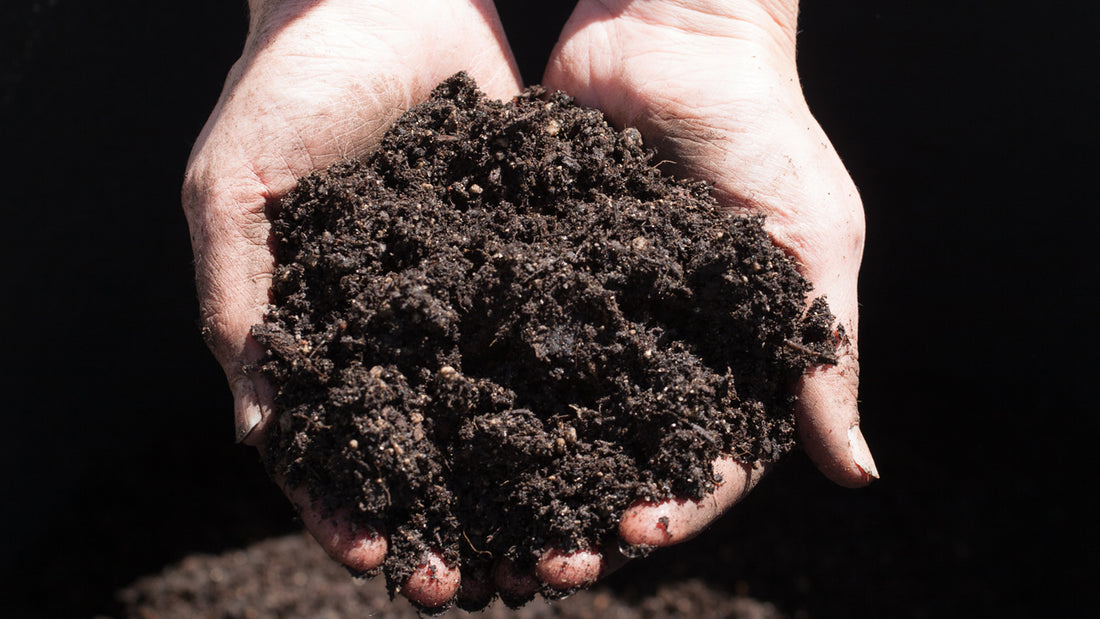When winter weather arrives, your topsoil will notice!
No matter where you live, how mild your climate, or how landscaped your yard, your land is constantly being subjected to the forces of erosion. Before you buy another bag of garden soil, it’s time to get the dirt on what’s happening, what you can do about it, and how to grow more soil naturally!

What is erosion?
The earth’s surface is constantly in motion. Wind, rain, snowmelt, and other natural forces move small bits of soil around. Often these effects are not noticeable, as the topsoil that is moved away is just as quickly rebuilt by earthworms, mycorrhizal fungi, decomposing organic matter, and other such means. But when the erosion is faster than the regeneration, the landscape gradually becomes altered, eventually resulting in hills and valleys, gullies and canyons, rock arches and mesas. People also cause erosion. Tilling your garden breaks up the natural structure of the soil, which can make the soil less stable and susceptible to erosion. The act of tilling, especially on a breezy day, results in the immediate dispersal of some of the precious topsoil. Erosion can also be caused by irrigation, overgrazing pastures, and many more land uses. The Dust Bowl of the 1930’s demonstrated on a large scale the negative erosion that people can cause.
Putting soil in its place
When your yard and garden erode, the topsoil is disappearing. This is where the best nutrients are for your plants, so you want to preserve as much as you can! There are many steps you can take to stop erosion and increase your existing topsoil. The first step to keeping your soil where you want it is in preventing further harm:- Plant a cover crop on bare soil to keep it from washing or blowing away
- Stabilize bare soil on hillsides with jute netting or burlap
- Practice good pasture management to prevent overgrazing (check out our video to learn how)
- Consider switching to no-till or low-till agriculture in your garden.
- Review your irrigation systems for your yard and garden. Consider switching to drip irrigation, which is more gentle on the soil. Avoid over-watering or watering too quickly for the soil to absorb. Plant water-wise plants whenever possible.
- Before fertilizing this year, do a soil test! Proper fertilizing helps build stable, healthy soil. Over-fertilizing increases the chances of erosion by causing poor soil structure (not to mention the unnecessary expense).
- Practice permaculture. Not only can this save you water (and time!), the roots of the permanent crops in your landscaping and garden can help to stabilize the soil.

Get more soil, naturally!
Now that your soil is here to stay, maximize your topsoil levels with a few easy steps.- Plant a cover crop such as our Premium Soil Builder, which will add organic matter to your soil
- Encourage mycorrhizae, earthworms, and other beneficials in your soil. These organisms will convert organic matter into soil and add extra nutrients.
- Make your own compost (learn how here with our video) or get some top quality ready-made compost for your garden. Compost is full of beneficial microorganisms, nutrients, and organic matter which all help build more topsoil.
- Turn your yard and garden into a permaculture food forest. By creating a healthy micro-ecosystem, you can help your land generate its own nutrients and build soil.

